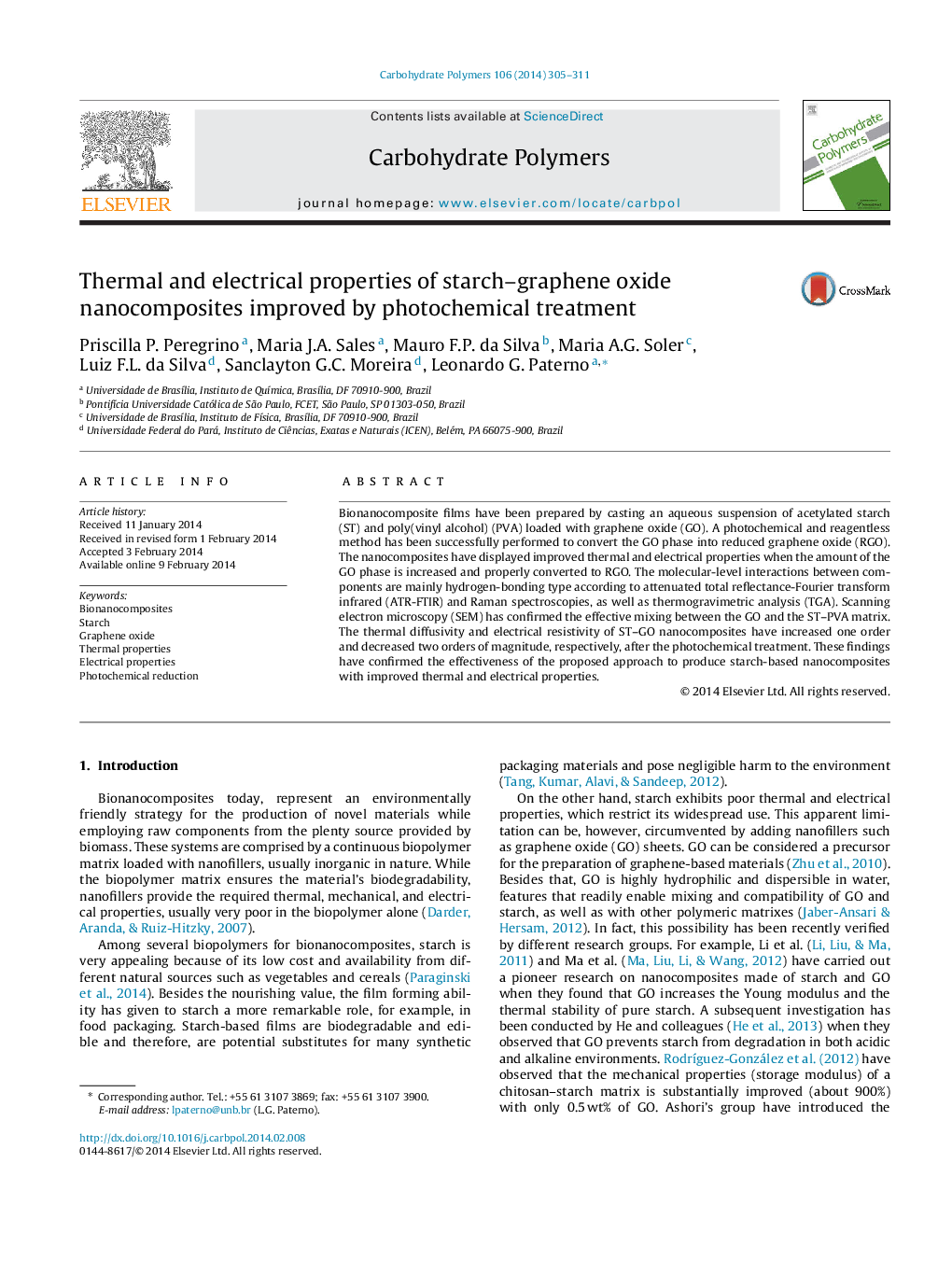| Article ID | Journal | Published Year | Pages | File Type |
|---|---|---|---|---|
| 1384076 | Carbohydrate Polymers | 2014 | 7 Pages |
•Bionanocomposites of starch filled with graphene oxide.•Reagentless photochemical treatment to reduce graphene oxide and improve thermal and electrical properties of nanocomposites.•Assessment of molecular-level interaction of starch and graphene oxide by ATR-FTIR and thermogravimetric analysis.
Bionanocomposite films have been prepared by casting an aqueous suspension of acetylated starch (ST) and poly(vinyl alcohol) (PVA) loaded with graphene oxide (GO). A photochemical and reagentless method has been successfully performed to convert the GO phase into reduced graphene oxide (RGO). The nanocomposites have displayed improved thermal and electrical properties when the amount of the GO phase is increased and properly converted to RGO. The molecular-level interactions between components are mainly hydrogen-bonding type according to attenuated total reflectance-Fourier transform infrared (ATR-FTIR) and Raman spectroscopies, as well as thermogravimetric analysis (TGA). Scanning electron microscopy (SEM) has confirmed the effective mixing between the GO and the ST–PVA matrix. The thermal diffusivity and electrical resistivity of ST–GO nanocomposites have increased one order and decreased two orders of magnitude, respectively, after the photochemical treatment. These findings have confirmed the effectiveness of the proposed approach to produce starch-based nanocomposites with improved thermal and electrical properties.
